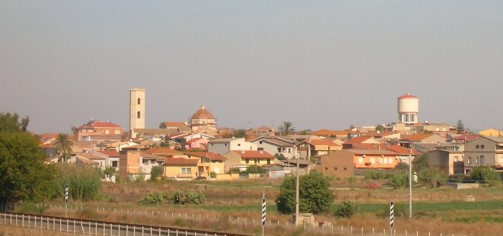The municipality of Serramanna rises in Campidano, in the southwestern part of Sardinia, in the fertile plain that stretches between the mouths of the Flumini Mannu and rio Leni rivers. Already inhabited in the pre-Nuragic and Nuragic periods, the area was later inhabited during the period of Roman rule. In the Judicial period, Serramanna was part of the Giudicato of Cagliari, belonging to the Curatoria of Gippi. Still far from being an urban agglomeration as it is today, it was subdivided into many villas that over time became depopulated in favor of a single center.
Annexed to the Giudicato of Arborea in 1257, the town was then ceded to the Pisans in 1297. In 1414 Ferdinand I of Aragon (also called of Trastàmara or “the Just”) assigned it to Giovanni Civiller. Due to alternating dynastic events, in 1617 the Brondo y de Ruecas obtained for their descendants the title of Counts of Serramanna with the emblem of the two Moor heads that are still present today in the municipality’s coat of arms, created by artist Flaviano Ortu. Serramanna’s ancient origins are well represented by the remarkable number of monuments, churches, and places of historical and cultural interest that make the area one of the most fascinating in Campidano. Also very characteristic from a cultural point of view is the toponymy related to the ancient Serramannese districts, present in number of 13 and known since the 1700s. The old part of the settlement is characterized by traditional Campidanese houses.


